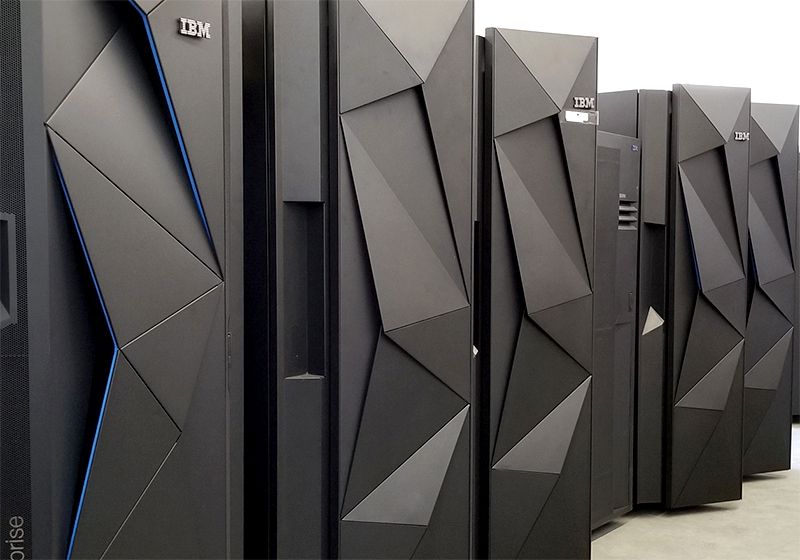Introduction to COBOL

What is COBOL?
One computer programming language was designed specifically for business, Common Business-Oriented Language, COBOL. COBOL has been transforming and supporting business globally since its invention in 1959. COBOL is responsible for the efficient, reliable, secure and unseen day-to-day operation of the world's economy. The day-to-day logic used to process our most critical data is frequently done using COBOL.
Many COBOL programs have decades of improvements which includes business logic, performance, programming paradigm, and application program interfaces to transaction processors, data sources, and the Internet.
Many hundreds of programming languages were developed during the past 60 years with expectations to transform the information technology landscape. Some of these languages, such as C, C++, Java, and JavaScript, have indeed transformed the ever-expanding information technology landscape. However, COBOL continues to distinguish itself from other programming languages due to its inherent ability to handle vast amounts of critical data stored in the largest servers such as the IBM Z mainframe.
Continuously updated to incorporate modernized and proven programming paradigms and best practices, COBOL will remain a critical programming language into the foreseeable future. Learning COBOL enables you to read and understand the day-to-day operation of critical systems. COBOL knowledge and proficiency is a required skill to be a "full stack developer" in large enterprises.
How is COBOL being used today?
COBOL is everywhere. You have probably used an application written in COBOL today. For example, consider the following statistics:
- About 95% of ATM swipes use COBOL code.
- COBOL powers 80% of in-person transactions.
- Every day, COBOL systems handle $3 trillion in commerce.
How pervasive is COBOL? Consider these mind-boggling facts:
- Every day there are 200 times more COBOL transactions executed than there are Google searches.
- There are over 220 billion lines of COBOL programs running today, which equates to around 80% of the world's actively used code.
- 1,500,000,000 lines of new COBOL code is written each year.
Why should I care about COBOL?
The COBOL programming language, COBOL compiler optimization, and COBOL run time performance have over 50 years of technology advancements that contribute to the foundation of world's economy. The core business logic of many large enterprises has decades of business improvement and tuning embedded in COBOL programs.
The point is - whatever you read or hear about COBOL, be very skeptical. If you have the opportunity to work directly with someone involved in writing or maintaining critical business logic using COBOL, you will learn about the operation of the core business. Business managers, business analysts, and decision makers come and go. The sum of all good business decisions can frequently be found in the decades of changes implemented in COBOL programs. The answer to How does this business actually work? can be found in COBOL programs. Add the following to your awareness of COBOL. It is an absolute myth that you must be at least 50 years old to be good with COBOL. COBOL is incredibly easy to learn and understand. One of the many reasons financial institutions like COBOL, is the fact that it is not necessary to be a programmer to read and understand the logic. This is important because critical business logic code is subject to audit. Auditors are not programmers. However, auditors are responsible for ensuring the business financial statements are presented fairly. It is COBOL processing that frequently result in the business ledger updates and subsequent financial statements.
Now for a real-world lesson. A comment recently made in a well-known business journal by someone with a suspect agenda was quoted as saying, "COBOL is a computing language used in business and finance. It was first designed in 1959 and is pretty old and slow." A highly experienced business technology person knows the only true part of that last sentence was that COBOL was first designed in 1959.
It's no secret that lots of banks still run millions of lines of COBOL on mainframes. They probably want to replace that at some point. So why haven't they? Most banks have been around long enough to still feel the pain from the ~1960's software crisis. After spending enormous amounts of money, and time, on developing their computer systems, they finally ended up with a fully functional, well-tested, stable COBOL core system.
Speaking with people that have worked on such systems, nowadays they have Java front ends and wrappers which add functionality or more modern interfaces, they run the application on virtualized replicated servers, but in the end, everything runs through that single core logic. And that core logic is rarely touched or changed, unless necessary.
From a software engineering perspective, that even makes sense. Rewrites are always more expensive than planned, and always take longer than planned (OK, probably not always. But often.). Never change a running system etc., unless very good technical and business reasons exist.
-- source: COBOL Programming with VSCode